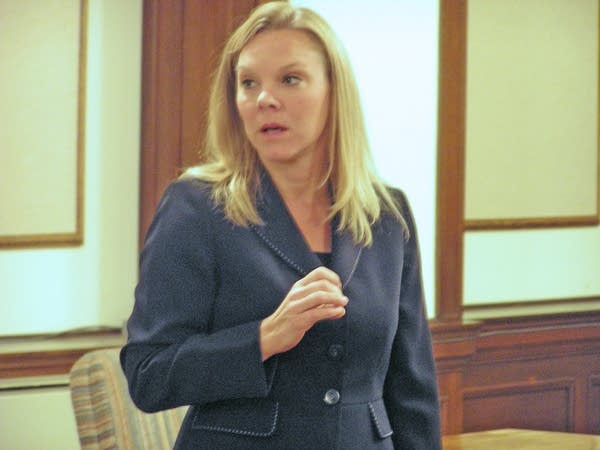Local governments could be "crushed" by debt, auditor says

They call it "OPEB." It's a little acronym that means a huge problem for Minnesota's local governments including school districts, towns and some counties. Other Post-employment Benefit Liabilities are promises made to employees to cover things like medical health care or life insurance after workers retire.
Across Minnesota, it adds up to over $3 billion in promises made, without enough money coming in to cover the bills.
State Auditor Patricia Anderson says it's even worse because that huge number involves just a few of the state's local governments.
"Less than 10 percent of cities in the state have any OPEB liability," Anderson says. "About half the counties, but it's small - much smaller. It's mostly a school district issue. And it's also very geographical, here in Minnesota. It's the Arrowhead and it's a little bit in the Twin Cities, mostly Ramsey County."
Create a More Connected Minnesota
MPR News is your trusted resource for the news you need. With your support, MPR News brings accessible, courageous journalism and authentic conversation to everyone - free of paywalls and barriers. Your gift makes a difference.
Ramsey County owes more than any other Minnesota Government - with an estimated unfunded liability of $530 million. Compare that to the city of Duluth, which owes about half that much. And, Anderson says, Duluth has been working for more than a year to address its problem.
What do you do? Shut down the schools for 5 years?
"The city of Duluth is ahead of the game," Anderson says. "Very much so. Most of these entities have done nothing. Nothing."
Most of the entities are school districts. Some are relatively small districts with big bills. Per pupil, Greenway's ISD 316 in Coleraine tops the list.
Anderson says the liability for the Greenway District comes to almost $68,000 per pupil. In Chisholm it's $64,000 and in Ely it's $55,000 per pupil.
And while a city has some options, school districts really don't. Cities can increase taxes or raise fees for things like utilities. School districts have little ability to raise money.
"What do you do?" asks Anderson. "Shut down the schools for five years? I mean, essentially that's what you're talking about dollar wise. That's what it would take. That's how bad it is."
Northeast Minnesota school officials say the problem goes back decades to the heydays of Minnesota's mining industry.
Ely superintendent Tom Bruels says Iron Range districts had to compete for workers with the iron mines. Without that kind of money, districts would offer employees generous benefit packages. But in the past 10 to 20 years, health insurance costs have soared and school enrollment plunged.
"We've lost 300 kids in the span of 10 years, going from 900 some to 600 some," Bruels says. "And that's a significant loss of students. And the reason that's so significant is the fact that much of our funding; the majority of our funding, is tied to student enrollment."
Now, he says, schools can trim benefits from new contracts, but they can't escape the old ones. He says the state may be asked to help.
"You know, they gave some relief to the Minneapolis teachers retirement fund," Bruels says. "Is there something similar they can do for us. Looking for some outside help, and trying to help ourselves internally I think are two ways we can start to approach the problem."
Without state help, local taxpayers will be on the hook. And, Patricia Anderson says, some taxpayers stand to get hit more than once. In Chisholm both the city and the local school district have outstanding unfunded benefits.
"That's where you're going to have a real crisis," Anderson says. "Especially in some of these towns where you have an aging population. You have declining population, declining enrollment, like in these school districts. People's ability to pay just isn't there. But you have over-lapping Opeb. You've got a crisis in your city and your school, both. And they're both going to be seeking additional revenues from their taxpayers to try to pay this off."
Anderson says she believes Minnesota is the first state to compile this information. But it's an issue everywhere. New accounting rules will for the first time force governments to acknowledge the liabilities on their balance sheets. Those regulations are being phased in over the next three years.
